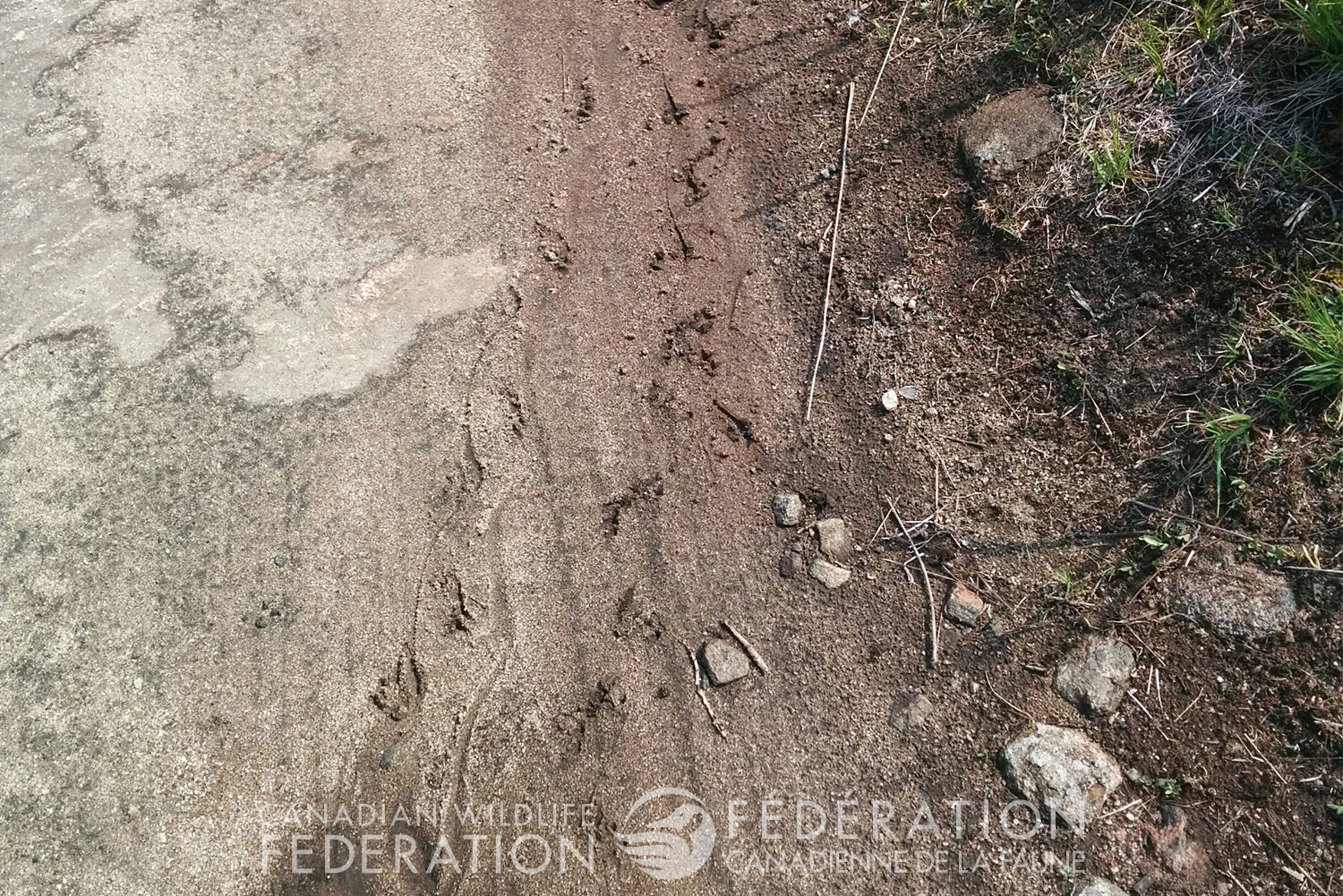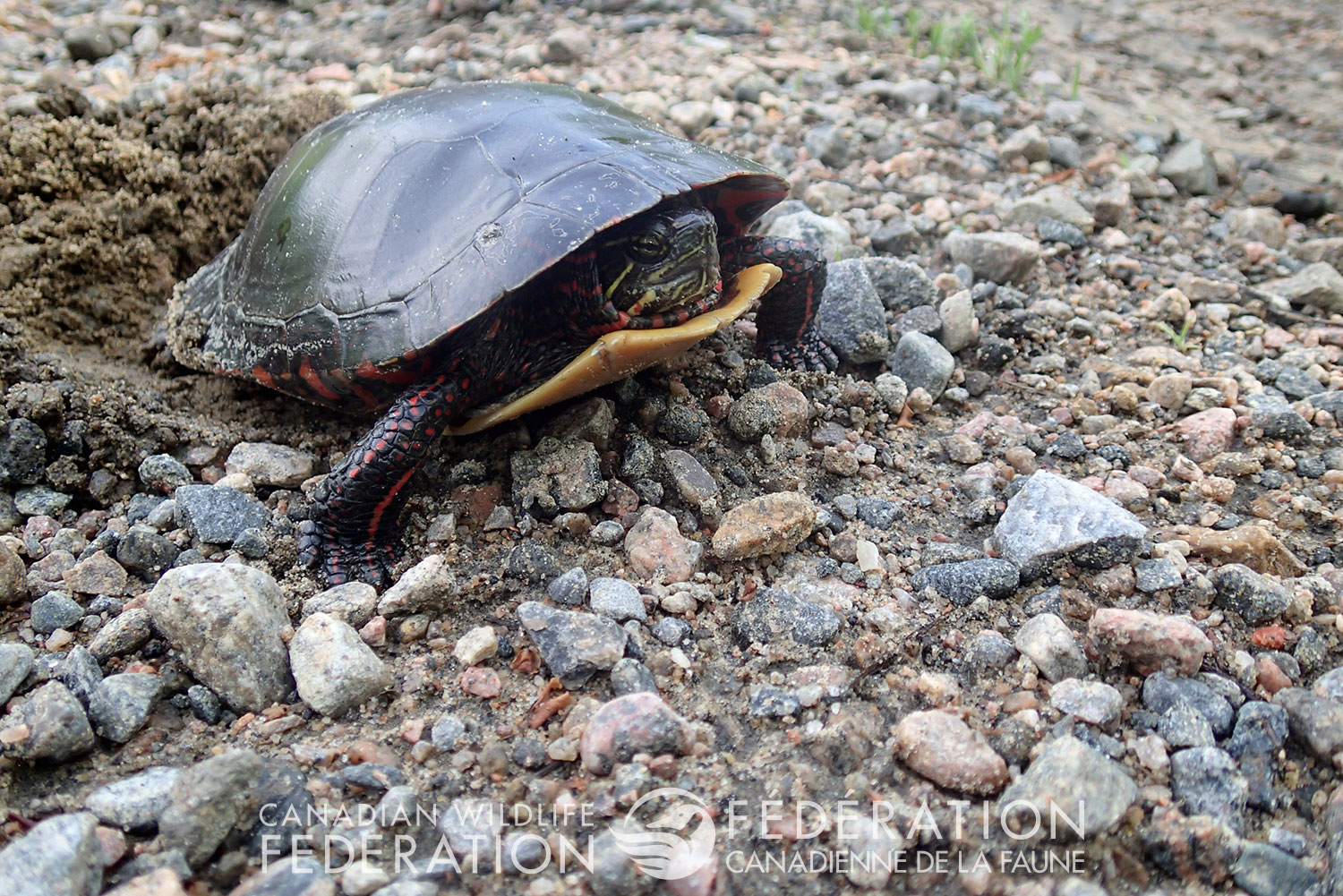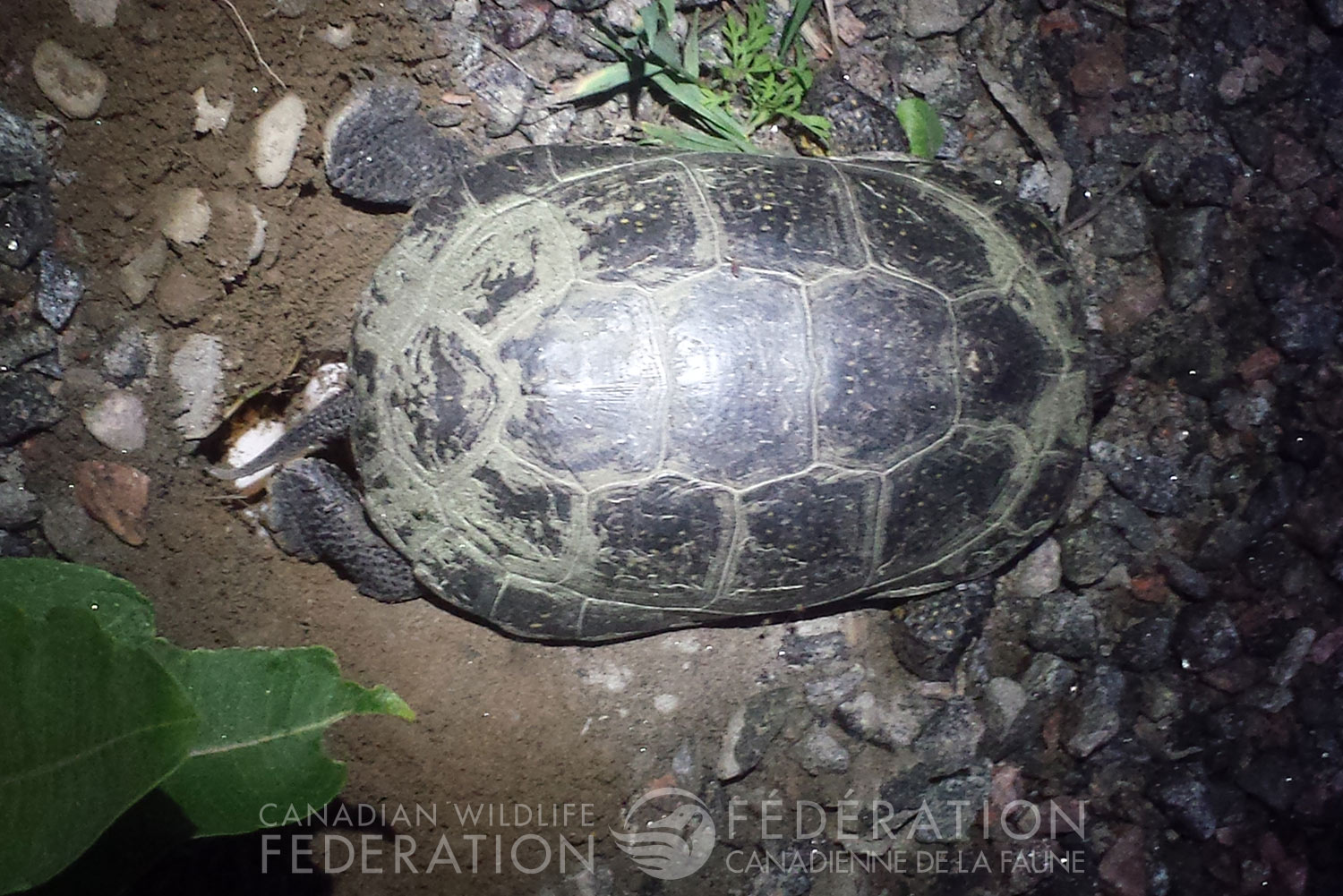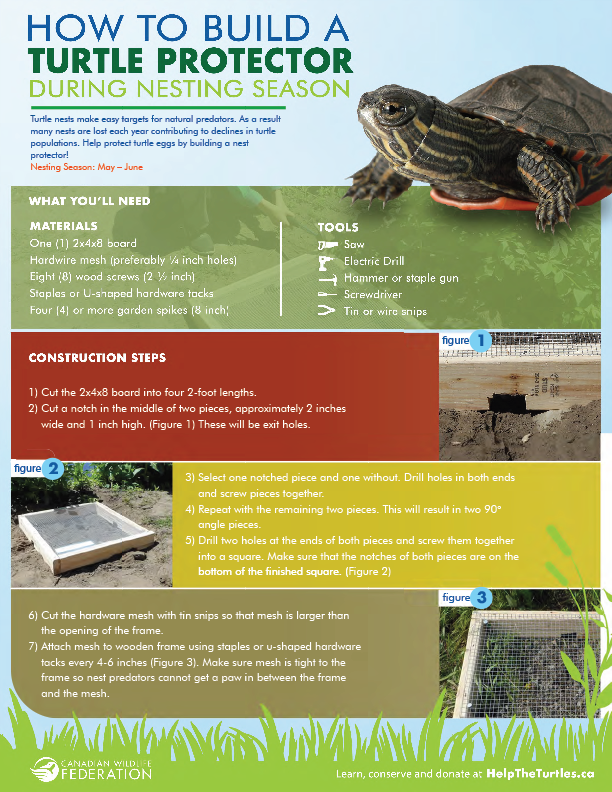Have you ever seen a turtle digging on the side of the road and wondered what they were doing? That was likely a female turtle nesting.

That female may have also walked a few kilometres across land to find the same nesting area that she has likely been returning to for decades. Once she reaches the right area, there are four main nesting stages:
- Searching
- Digging
- Laying
- Covering
It is important to keep your distance from a turtle until she is done all nesting stages or you may scare her away. The whole process can take a couple of hours or more to complete.
Stage 1: Searching

First, turtles search for the perfect place to lay their eggs around dusk or dawn. That place is often in soft soil that gets a lot of sun, like the south-facing slope of a riverbank or hill. The nest needs to be above the water so that the developing eggs do not drown. The females will stick their nose into the soil in between scanning for any potential predators to choose a spot to begin to dig. The turtle is the most skittish at this stage and can be scared off by people walking past her.
Stage 2: Digging

Second, turtles begin to dig a nest cavity with their back feet. They may abandon some attempts for a number of different reasons. They could be scared off by a predator (or well-meaning human) or find too many rocks in their way. If you watch the turtle from a distance through a pair of binoculars, you may see her scoop dirt out one back foot at a time, causing her shell to rock side to side.
Stage 3: Laying
Once the turtle has finishing digging her nest cavity, she will lay her eggs. The number of eggs laid depend on the species and the size of the turtles. Blanding’s Turtles lay an average of 6 to 15 eggs, while Snapping Turtles lay an average of 25 to 45 eggs. Turtles will straighten their legs to lay each egg and sink back down to rest their shell on the ground in between. Blanding’s Turtles will stretch their neck out, exposing their brilliant yellow chin, each time they lay an egg. There can be multiple minutes in between each egg being laid, especially if the turtle is disturbed by a car driving past or an animal walking by.
Stage 4: Covering

Once all the eggs are laid, the turtle will cover the nest cavity back up with the soil they had dug out. If you watch the turtle from a distance through a pair of binoculars, you may see her legs splayed out behind her pulling dirt into the nest one back foot at a time, causing her shell to rock side to side.
She will also curl her knuckles and press her feet into the soil to pack it flat above the eggs. Snapping Turtles dig such large holes, that they leave a couple of piles of sand on top of the nest after they finish covering it. Smaller turtles will camouflage their nest completely by patting the top flat with the bottom of their shell. This is the final maternal gesture the female turtle will offer to her offspring. She returns to her summer wetland habitat, leaving the nest to develop on its own.

Turtles can sometimes unknowingly nest in dangerous locations, such as the shoulder of a road or the middle of someone’s gravel driveway. There can also be many nest predators, like foxes and raccoons, in the area. If a turtle nests on your property, you can protect it by covering it with a nest protector. If you find a Blanding’s Turtle nesting in the south Muskoka and Simcoe area, call the START Turtle Hotline, 705-955-4284.

 build a turtle protector for turtle nests? Visit
build a turtle protector for turtle nests? Visit
2 comments
A turtle is digging g a nest right infront of the horse round pen gate. Its hard packed clay and not a safe place.
Hi Vickie
Your best bet is to build and install a nest protector. Nest protectors are the simplest way to protect a nest (download how to build your own nest protector: https://cwf-fcf.org/en/explore/turtles/htt_nest_protector_en_lr.pdf). A protector has a wooden frame with a wire mesh on top to keep out predators, but allows sun and rain to reach the ground above the nest. Exit holes in the wooden frame allow the hatchlings to leave the protector after they hatch out.